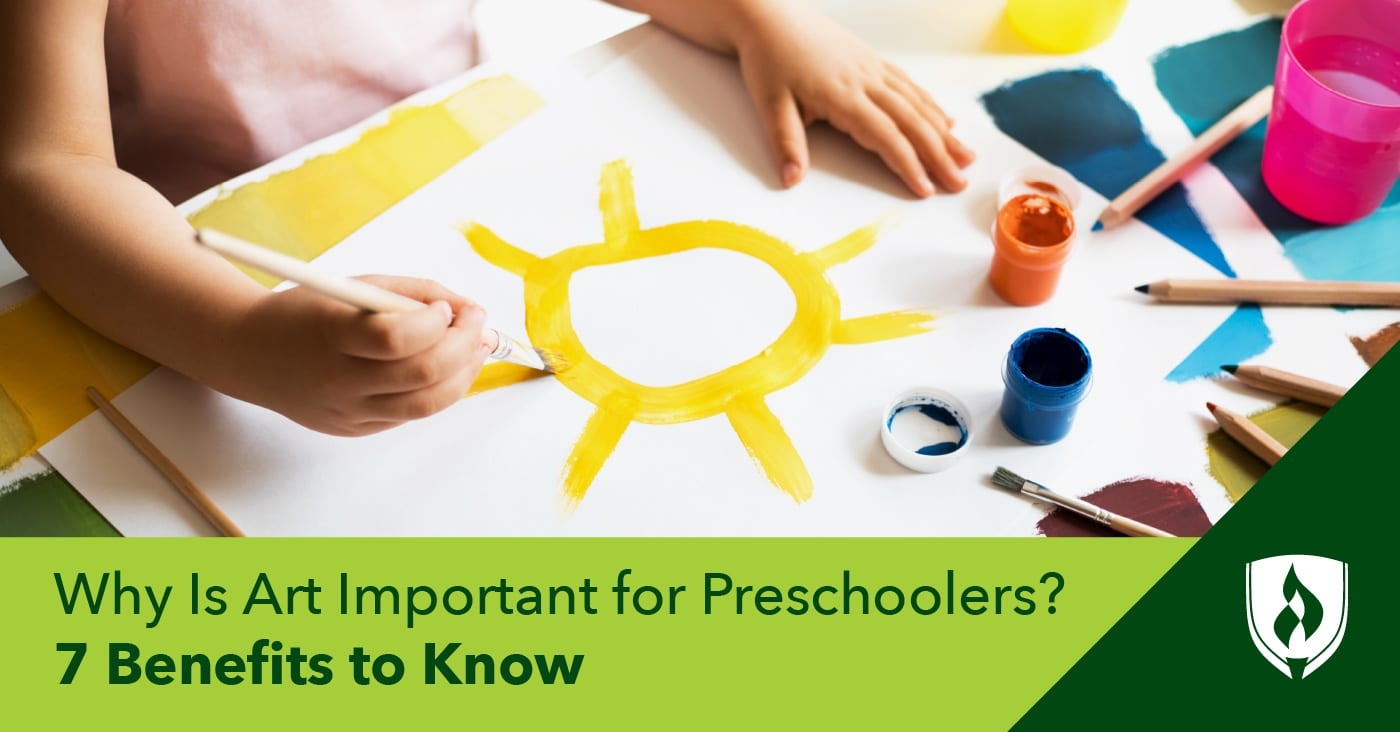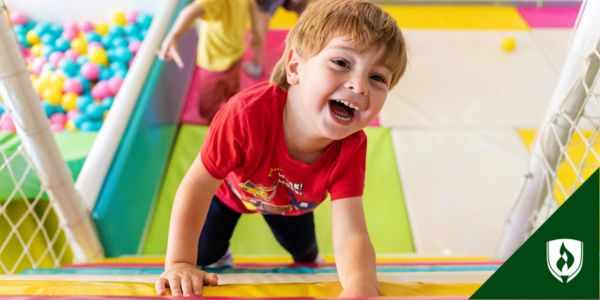
Few things are more delightful than watching a child intently draw and victoriously show you their project. The joy kids find in art can be infectious and is certainly unparalleled. But did you know that art is important for children’s development too?
While preschoolers are doodling quietly at the table, they are learning more than just how to draw a house. The process of creating art has myriad benefits for young kids. From helping children develop an attention span to laying the foundation for important life skills, crafting is much more than just a quiet bit of fun for young kids. If you’ve ever wondered, “Why is art important for preschool?” read on to learn about these benefits and get some art ideas for the kiddos in your life.
Looking for more creative activities? Explore Spring Activities for Preschoolers for engaging ideas to keep them entertained and learning throughout the season.
7 Benefits of art in preschool
1. It can be an outlet for emotion
We’ve all seen an upset, antsy child getting ready to throw a tantrum. Sometimes, kids don’t know how to express their emotions any other way. When they’re out of patience, the only option is to break down and cry. However, letting kids work on an art project can give them a relaxing outlet to constructively express themselves. The child can focus their energies on creating something and feel proud of what they make and how they articulate their emotions.
2. Fine motor skill development
As kids grasp crayons, place stickers, handle glue sticks and cut shapes, they are honing their fine motor skills. According to the National Association for the Education of Young Children(NAEYC)®, these activities provide a foundation for critical life skills like writing, typing or even learning to play a musical instrument. Additionally, fine motor skills allow kids to be more independent with many everyday tasks like eating and getting dressed.
3. Opportunities are present to build language skills
Talking to kids about their art allows them to practice their vocabulary, communication abilities and general literacy skills. Some kids may not even need prompting, instead excitedly explaining their drawing or painting.
According to Diana Lee Santamaria, an educator and children’s author, “Through art, children are able to learn a variety of words—colors, shapes, materials, tools and ways to express in words what they made.”
Kids can also write on their art or ask an adult to print something specific on their project. For example, letting the child sign their art with their name gives the child an entertaining way to practice writing.
Emergent writing attempts like this are even associated with their future writing capabilities. Additionally, drawing is often the first step toward writing, eventually turning to cursive-like scribbles and finally to letters.
4. Critical thinking
As the child works through the creative process, they must plan out what they want to create. They must consider the limitations of their tools (after all, crayons don’t erase, watercolors are temperamental and ordinary pencils don’t have color). They also have to problem solve. What will they do when they draw a wrong line with marker? How are they going to label the horse when they don’t know how to spell “horse”?
Planning and problem solving can lay groundwork for later in life when the child hones their critical-thinking skills. The time they spent carefully planning artwork and working within the limits of their supplies will transfer into sought-after skills in the workplace.
5. Social development
It may surprise you, but even sitting alone drawing can help a child develop socially. Sitting down and focusing helps the child develop patience, a longer attention span and general focus. When they run into problems, not only are they learning problem-solving skills, but they are also developing control over their frustration.
All these skills transfer to well-mannered children. These kids will be able to pay attention through longer conversations and have patience with others. And when they are frustrated with another child—or even an adult—they can manage their emotions rather than lashing out.
6. Creativity
Another benefit of art that Santamaria notes is that it helps develop creativity. In a world where routine tasks are easily automated, creativity is likely to be sought after by employers who value innovative thinking. And it’s not hard to see why. Our world can change seemingly in a blink, and innovation is critical for companies to stay competitive.
Putting the child’s future career ambitions aside, creativity also encourages artistic hobbies and helps them solve everyday problems and express complex feelings.
7. Early math skills
Who says learning math has to be boring? Some of the first math skills children learn are tied to mastering shapes and space. Not only are these critical to communicating in daily life, but they also are foundational to geometry.
“Art strengthens the understanding of shapes and patterns,” Santamaria says.
Additionally, as kids work within the confines of a sheet of paper, canvas or sidewalk square, they develop spatial awareness. When the first circle takes up half the page, the child has to find ways to fit the rest of their drawing on the remaining half. This lets the child practice rotating or scaling shapes and practice directional terms like “next to,” “under” or “beside.”
Process art vs. product art
While all these benefits make a favorable case for preschool art, not all art-related activity is created equal. Process-focused art, rather than product-focused art, is often better for developing these skills.
So, what’s the difference between these two types of art?
Process-focused art lets the child explore a creative outlet without much outside interference. The child is free to try new ideas and express themselves. On the other hand, product-focused art prescribes directions and a finished product—it’s less open ended.
The goals of these two art approaches are distinct too. The aim of process-focused art is to get the child engaged in a project and excited about what they’re creating. Product-focused art aims to produce a “correct” end product. By eliminating the exploratory aspect of art, the product-focused approach often narrows the benefits to refining fine motor skills and teaching children to follow directions.
Santamaria echoes the importance of letting kids use art as a way to explore, saying, “There is no right or wrong way to create art, and it is important for children to use their imaginations.”
Preschool art projects
Process-focused art can be as easy as giving kids some supplies and letting them create freely. As Santamaria says, “As the teacher, one should model how to use the tools first but allow the child to create however they’d like using the materials provided.”
Some specific projects could include:
- Watercolor painting
- Molding/sculping clay
- Creating collages
- Crafting with beads and string/yarn
- Finger painting
- Drawing with crayons, pencils, markers or other pens
Ready for an art extravaganza?
With all the benefits of art for preschoolers, parents and educators who let kids explore art help these kids develop critical skills and brighten their futures. Despite the mess it can make and patience it requires, seeing children light up with preschool art projects is well worth it.
If all this art and creativity with kids sounds like a blast, then a career in early childhood education may be the fit for you. At the end of the day, you can rest assured you’ve made a positive impact on some young kids—all while having fun with creativity. Read our article “9 Signs You Should Be Teaching Preschool” to see if a career working around children is in your future.
Related Articles:
- 13 Fun Ways to Develop Motor Skills in Young Children
- The Importance of Recess: Why Schools Need More Playtime
- Teachers Share the Funny Things Kids Say in the Classroom
- What Is Rough and Tumble Play? An Educator’s Guide
NAEYC is a registered trademark of the National Association for the Education of Young Children




